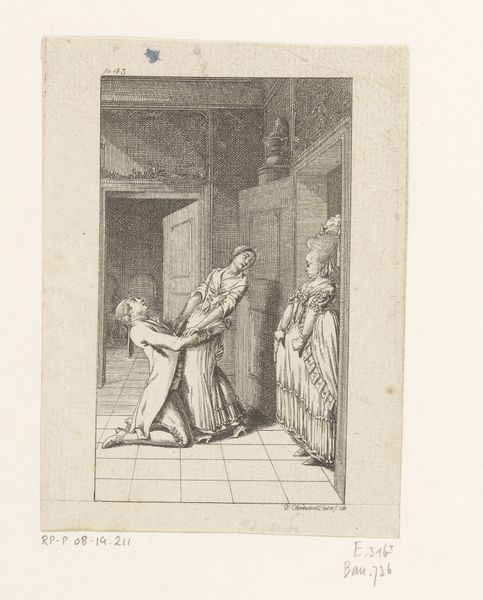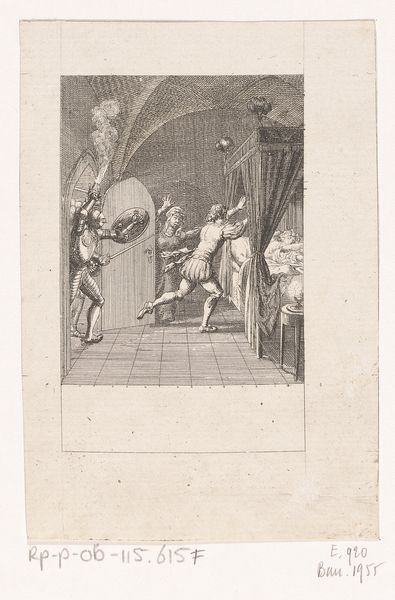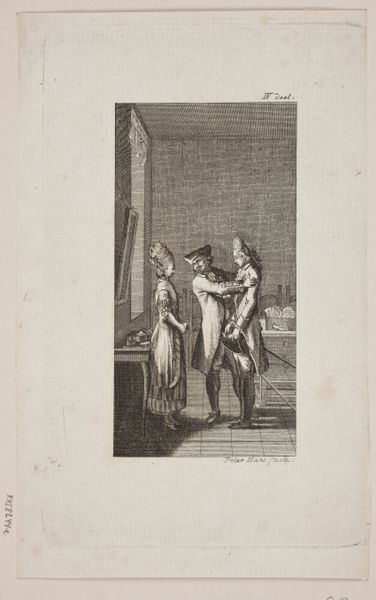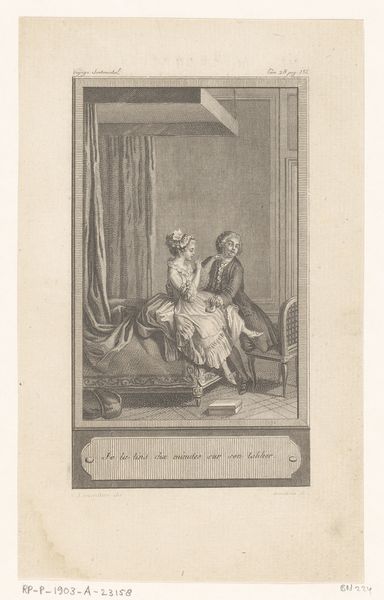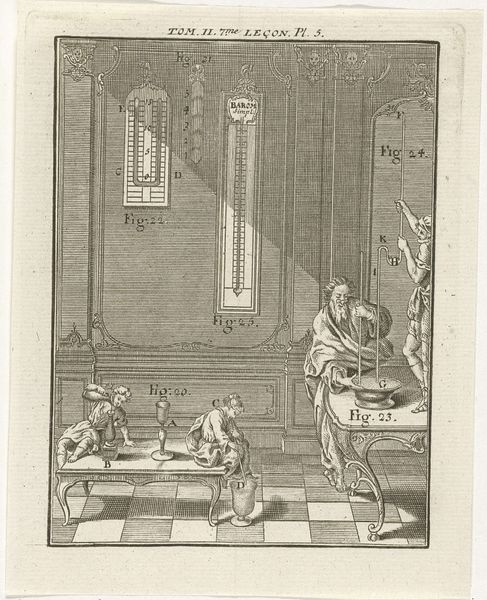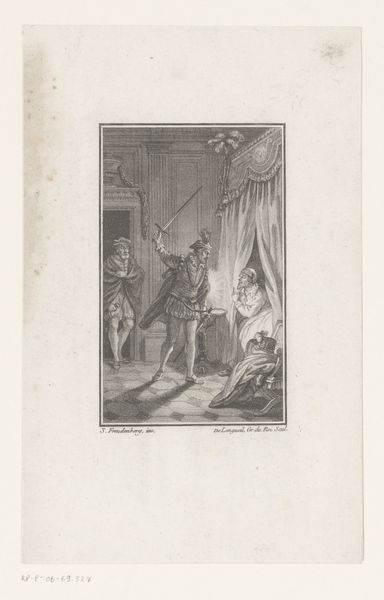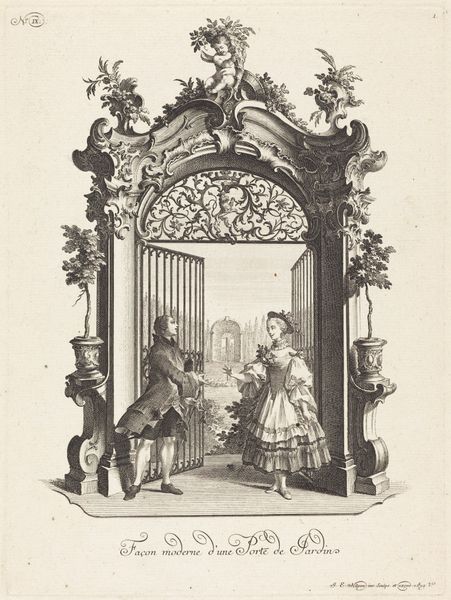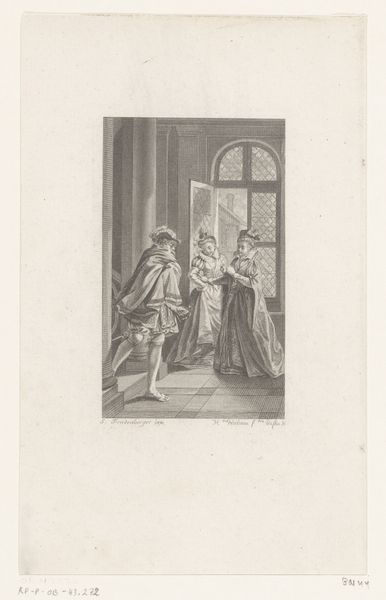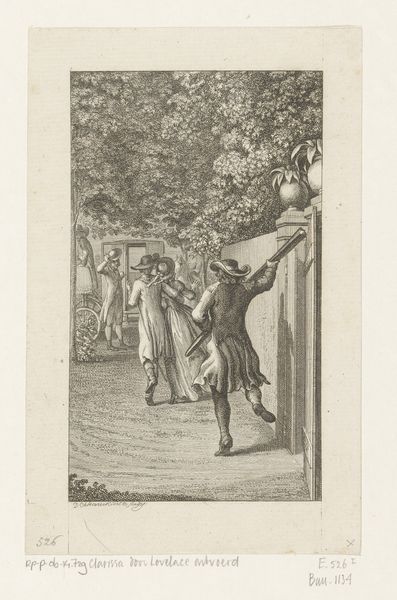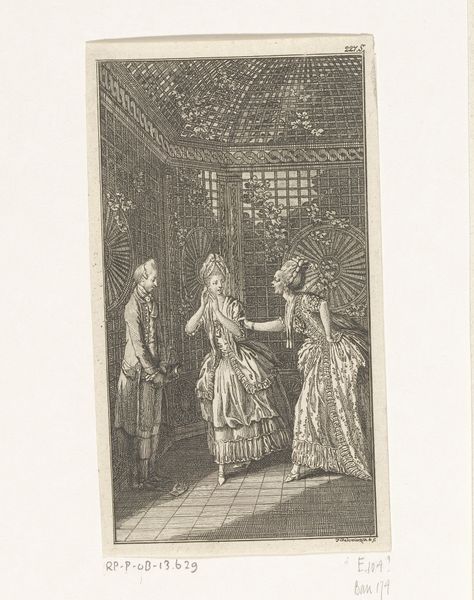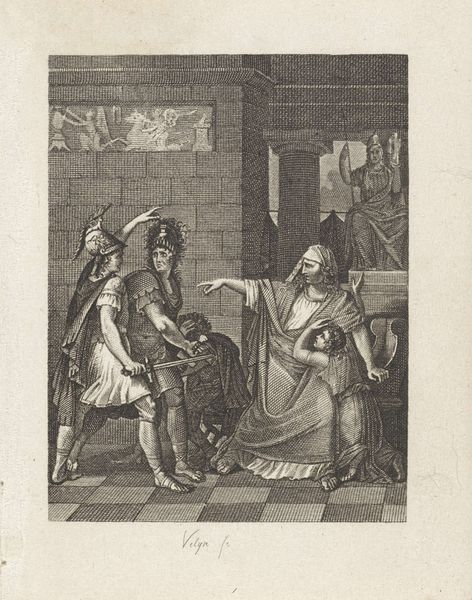
Illustration til "Katekismus for alle mennesker" 1742 - 1809
0:00
0:00
Dimensions: 140 mm (height) x 90 mm (width) (bladmaal)
Editor: We're looking at Johann Gottlieb Friedrich's "Illustration til \"Katekismus for alle mennesker,\"" an engraving from between 1742 and 1809. It strikes me how the stark contrast between light and shadow really defines the scene and its almost theatrical presentation of space. How would you interpret its formal qualities? Curator: The strategic use of hatching and cross-hatching defines not just the figures, but the architecture itself. Note how the rigid linearity of the pillars contrasts with the curved forms of the tented structure above. This tension creates a visual dynamic, doesn’t it? And observe how the composition leads your eye, diagonally, from the foreground figure towards the figure in the background. Editor: Yes, I see that pull between the figures. It feels carefully constructed. What does it tell us? Curator: Semiotically, consider the arrangement of the architecture and the figures' positions within it. What statements might these contrasting planes of shadow and the geometric composition make? The foreground figure is partially obscured, which draws us closer, heightening a sense of intrigue, of almost clandestine witnessing. Editor: The detail in the engraving, despite its size, is pretty amazing. So much texture achieved just with lines. I find the way the floor tiles recede to the back very effective. Curator: The artist certainly makes considered use of linear perspective to suggest depth. Note, too, the interplay of light and dark upon the receding plane, enhancing the dimensionality. What is the overall effect for you, then? Editor: I think it highlights the distance, perhaps even a metaphorical distance, between the figures. Thanks, I’m seeing a new layer of intention now, thinking about that use of perspective and shadowing. Curator: Indeed. Reflect on these formal aspects: they serve as a visual metaphor to frame relationships of tension and of intrigue.
Comments
No comments
Be the first to comment and join the conversation on the ultimate creative platform.
